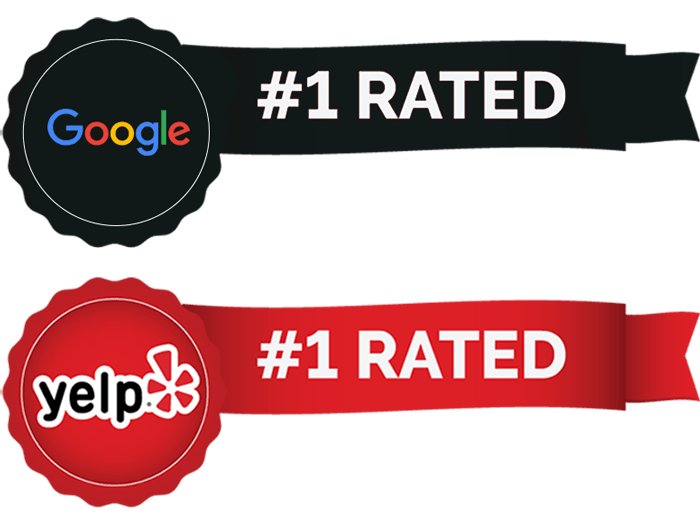Physical Therapy Management of COPD

Physical Therapy Management of COPD – Information, Exercises, and More
If you’re like most people with COPD, the idea of physical exercise probably sends shivers down your spine. The difficulty breathing, the coughing, and the overall discomfort are not appealing, so instead, you avoid exercise at all costs.
But, not engaging in physical exercise can prove more detrimental in the long run. So, what can you do?
COPD physical therapy. It’s safe, it’s medically supervised, and it can work wonders for COPD patients.
Learn more about physical therapy management of COPD in this quick guide.
Contents
What is COPD?
COPD, or chronic obstructive pulmonary disease, is a combination of diseases that lead to breathing problems and airflow blockage, including:
- Chronic bronchitis: Inflammation of the medium-sized airways in the lungs causes a phlegmy, mucousy, persistent cough lasting for 3 months of the year for 2 consecutive years.
- Emphysema: Damage to the small air sacs in the lungs resulting in shortness of breath and chronic cough.
More than 16 million Americans suffer from COPD, and millions more are undiagnosed, making day-to-day life more difficult due to trouble breathing.
COPD currently has no cure, but luckily, it can be treated.
What Causes COPD?
The main cause of COPD is smoking, however, the disease can affect non-smokers as well.
For the 1 in 6 patients with COPD who don’t smoke, exposure to irritants, such as …
- Air pollution
- Dust inhalation
- Cooking fuel fumes; and
- Workplace chemicals
… are what’s responsible for causing the disease. Genetics is also a major component of COPD.
COPD Symptoms
According to the Global Initiative for Obstructive Lung Disease, COPD has four initial stages before reaching the end-stage. Symptoms are as follows:
- Stage I: Symptoms are mild and may not be noticeable. Lung function is just starting to decline.
- Stage II: Shortness of breath is present upon exertion. Symptoms are moderate and just beginning to progress.
- Stage III: Symptoms are severe. Shortness of breath worsens and COPD exacerbations are common.
- Stage IV: COPD is considered very severe, quality of life is extremely impaired, and exacerbation is potentially life-threatening.
- End-stage (or Stage V): Extreme COPD symptoms. FEV1 is less than or equal to 30%.
Your doctor will determine what stage your COPD has progressed to, based on:
- Your current symptoms
- How often your symptoms have worsened
- Number of hospital stays because of COPD; and
- Results of your spirometry (a test that checks the amount of air and speed at which you exhale)
COPD Treatment
For mild cases of COPD, little therapy is needed other than eliminating cigarettes and cigars, but for more advanced cases, effective therapy is available that may help to:
- Slow progression
- Control symptoms
- Reduce the risk of exacerbations; and
- Improve your quality of life
Quitting Smoking
Most importantly, quitting smoking as soon as you’re diagnosed with COPD is the best way to stop the disease from worsening.
For some, the idea of quitting smoking may seem daunting. If quitting doesn’t seem possible, talk to your doctor about using nicotine replacement products and how you should handle relapses.
Medications
The most common medication for COPD is bronchodilators which usually come in the form of an inhaler.
Other medications may include:
- Inhaled steroids
- Combination inhalers
- Oral steroids
- Phosphodiesterase-4 inhibitors
- Theophylline; or
- Antibiotics
Oxygen Therapy
You may need supplemental oxygen if there isn’t enough oxygen in your blood. This may include portable devices that you can take on the go.
Oxygen may only be required during sleep and other activities, while others will need oxygen all the time.
Surgery
Surgery may be required for emphysema patients who are not getting sufficient help from medications.
These surgeries may include:
- Lung volume reduction surgery
- Lung transplant; or
- Bullectomy
COPD Physical Therapy – Will PT Help?
Exercise is a key component of the overall rehabilitation program for COPD.
In combination with other therapies, your physical therapist can work with you individually or coordinate with your pulmonary rehabilitation team to help improve:
- Your strength
- Your exercise capacity; and
- Your overall health
Like other chronic conditions and ailments, COPD physical therapy can drastically improve your quality of life using hands-on care, prescribed movement, and patient education.
Best COPD Physical Therapy Exercises
Regular exercise is highly recommended for COPD patients. The best COPD physical therapy exercises will include a combination of:
- Stretching: Slowly lengthening the muscles will increase range of motion and flexibility and should be done before and after exercise.
- Cardiovascular: Aerobic exercises, such as walking, cycling, dancing, swimming, water aerobics, and more.
- Strength training: Repeated muscle contractions (tightening), especially in the upper body.
Aim to exercise every other day, or 3-4 times a week for 20-30 minutes at a time, as prescribed by your physical therapist.
Each session should include a warm-up and a cool-down period, and you should be working at an RPE (rate of perceived exertion) of about 3-4, meaning moderate to somewhat heavy.
How In Motion O.C. Can Help With COPD
In Motion O.C. has helped hundreds of patients with COPD — and we can help you too.
Check out our patient testimonials and case studies to see why we’ve been Voted #1 Physical Therapy Clinic in the entire country on Yelp.
We’re committed to bringing relief and improving the quality of life of every patient we treat. If you need physical therapy for COPD, give us a call.
All of our COPD physical therapy treatments are conducted by our highly-skilled Doctors of Physical Therapy in state-of-the-art facilities in the following locations:
- Irvine
- Huntington Beach; or
- Fountain Valley
Don’t wait. COPD can be managed with the proper care so you don’t have to suffer any longer.


